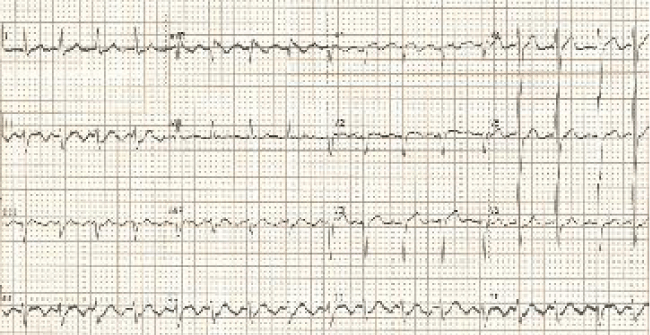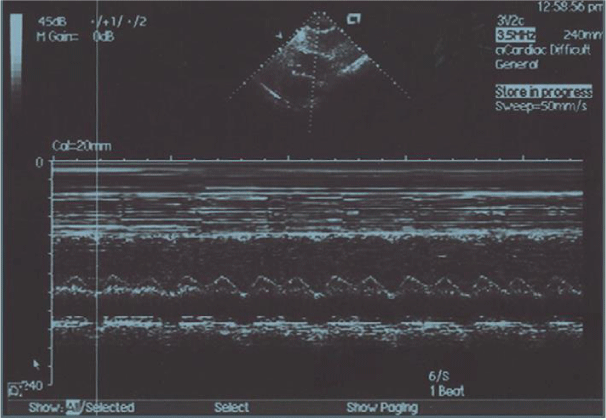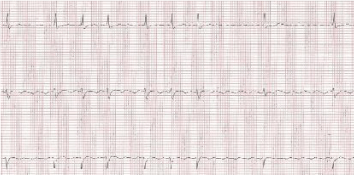The Importance of Echocardiography in the Diagnosis of Atrial Flutter?
Souzan Tatari*, Samer Kabbani and Nabil Shasha
Rafik Hariri University Hospital, Jnah-Beirut
*Address for Correspondence: Souzan Tatari, Rafik Hariri University Hospital, Jnah, Beirut-Lebanon, Tel: +961-383-3847; Fax: +961-184-3834; ORCID ID: orcid.org/0000-0002-2932-7360; E-mail: [email protected]
Submitted: 30 September 2018; Approved: 23 October 2018; Published: 24 October 2018
Citation this article: Tatari S, Kabbani S, Shasha N. The Importance of Echocardiography in the Diagnosis of Atrial Flutter. Int J Clin Cardiol Res. 2018;2(2): 058-060.
Copyright: © 2018 Tatari S, et al. This is an open access article distributed under the Creative Commons Attribution License, which permits unrestricted use, distribution, and reproduction in any medium, provided the original work is properly cited
Keywords: Atrial flutter; Diagnosis; Electrocardiography; Echocardiography
Download Fulltext PDF
Atrial flutter is a cardiac arrhythmia characterized by atrial rates of 240-400 beats/min and some degree of Atrioventricular (AV) node conduction block. Any prolonged atrial arrhythmia can cause tachycardia-induced cardiomyopathy. Morbidity and mortality result from complications of rate like syncope, congestive heart failure and embolic events. So diagnosis of atrial flutter and then treatment is crucial. We represent a case of 63 old male patient presented with 3 months history of worsening dyspnea, orthopnea and peripheral edema. Electrocardiography (ECG) was done and was interpreted as sinus tachycardia with interventricular conduction delay. Echocardiography revealed the fluttering of inter atrial septum in subcostal view. Atrial flutter was confirmed by an ECG that was performed during carotid massage. And the patient received appropriate treatment. This case demonstrated how echocardiography is sometimes more helpful in the diagnosis of atrial flutter than ECG since by ECG alone sometimes atrial flutter can be missed.
Introduction
Atrial flutter is a macroreentrant atrial tachycardia with constant P wave/flutter morphology with a rate usually >250 bpm [1]. Patients with recent-onset atrial flutter generally complain of palpitations, fatigue, light-headedness, chest pain, and/or dyspnea. In addition, exercise intolerance, worsening heart failure symptoms, and pulmonary complaints can also occur. Less commonly, hypotension, syncope, or embolic events can be the presenting symptoms [1].
ECG – This is an essential diagnostic modality for this condition. However vagal maneuvers, adenosine, exercise testing and holter monitor are helpful too. The transthoracic echocardiogram should be used to detect structural heart disease. Specifically, atrial sizes can be measured and valvular disease, ventricular function, and pericardial disease assessed. Right ventricular systolic pressures can also be measured and indicate the presence or absence of pulmonary HTN, which can be seen in pulmonary processes [1]. However, sometimes echocardiography plays a diagnostic role as in our case.
Case Presentation
63 year old man heavy smoker, not known previously to have heart disease presented to our medical center with 3 months history of worsening dyspnea, orthopnea and peripheral edema. Coronary angiography revealed widely patent coronary arteries. ECG was interpreted as normal sinus tachycardia at a heart rate of 110BPM with interventricular conductional delay (Figure 1). Echocardiography showed a moderately impaired LV systolic function with no major valvular abnormalities. However M mode examination showed fluttering of the interatrial septum (Figure 2) highly in favor of atrial flutter which was confirmed by an ECG performed during carotid massage (Figure 3). So patient was given anticoagulation, rate control and treatment of heart failure for a total of 3 weeks and then cardioversion was applied with restoration of sinus rhythm. This case demonstrated how echocardiography could sometimes give more obvious clues to the presence of atrial flutter than ECG.
Discussion
Even though atrial flutter is diagnosed by ECG [2], sometimes it can be missed. In typical flutter, ECG shows continuous and regular atrial activation with a sawtooth pattern, most obvious in leads II, III, and aVF [3]. Saw-tooth-shaped deflections of the interatrial septum were seen by M mode examination of the interatrial septum in the subcostal view which gave us a hint that our patient could have atrial flutter. Carotid massage was done while ECG was recorded and confirms the diagnosis of atrial flutter since it slows the ventricular rate (increases grade of AV block) and make flutter waves more evident. So echocardiography is capable of diagnosing supraventricular arrhythmias from interatrial septum [4].
Conclusion
This case demonstrated how echocardiography could sometimes give more obvious clues to the presence of atrial flutter than ECG.
- Page RL, Joglar JA, Caldwell MA, Calkins H, Conti JB, Deal BJ, et al. 2015 ACC/AHA/HRS guideline for the management of adult patients with supraventricular tachycardia. Circulation. 2016; 133: e471-505. https://goo.gl/noizJ3
- Boyer M, Koplan BA. Cardiology patient page. Atrial flutter. Circulation. 2005; 112: e334-e336. https://goo.gl/cnMmYZ
- Mitchell LB. Atrial flutter-cardiovascular disorders/ arrhythmias and conduction disorders-merck manuals.
- Jang WI, Park JH, Lee JH, Choi SW, Jeong JO, Seong IW. Cardiovascular images. M-mode echocardiographic demonstration of atrial flutter. Circ Cardiovasc Imaging. 2009; 2: e20-21. https://goo.gl/5rHwhr




Sign up for Article Alerts